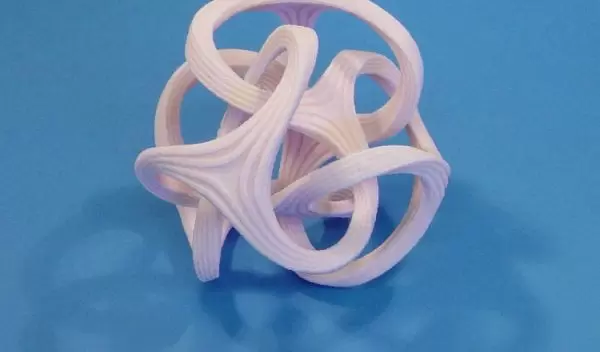
Reshaping Product Development: 3-D Printing Builds Models Directly from Computer Design
Engineers have been able to create models directly from computer-aided design (CAD) for almost two decades. There are several freeform fabrication methods, including laminated object manufacturing (LOM), a process that cuts away resin or laminated paper to produce plastic- or wood-like objects, and Selective Laser Sintering (SLS), which uses a laser to fuse metallic powder into solid prototypes.
Three-Dimensional Printing (3DPTM) is a relatively new technology that can create complicated, full-scale products directly from computer drawings. Massachusetts Institute of Technology professor Emanuel Sachs and his colleagues developed 3DPTM with support from NSF and other federal agencies.
How does 3DPTM work? It’s based on the understanding that any shape can be built from stacked layers. "Think of the Pyramids at Giza," says Sachs. In 3DPTM, thin layers (ranging from 25 to 200 microns) are spread over the surface of a powder bed. Using a technology similar to ink jet printers, 3DPTM applies a binder material between each of the successive layers. After all of the layers are "printed," the loose powder is removed and the object is usually finished in a furnace.
The resulting structures can be highly complex, with complicated internal geometries that would be difficult to machine using standard engineering methods. Another advantage of 3DPTM is that objects can be made of virtually any material, including ceramics, metals, polymers, and composites. Additionally, the process enables great control over an object’s composition, microstructure, and surface texture.
MIT has licensed 3DPTM technology to six companies in diverse fields. Direct manufacture applications already in development include scaffolding for human tissue grafts, devices for delivering timed-release medications, ceramic molds, metal parts, filters for power plants and electronic components.
NSF's Division of Design, Manufacture, and Industrial Innovation (DMII) originally funded the research to address manufacturing issues, specifically the potential for prototyping as an all-in-one process, notes George Hazelrigg, a program director in NSF's Engineering Directorate. "Now, it has spin-offs with a big impact in medicine."
-- Josh Chamot
